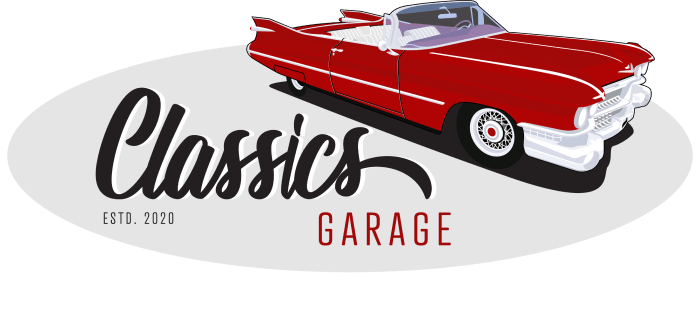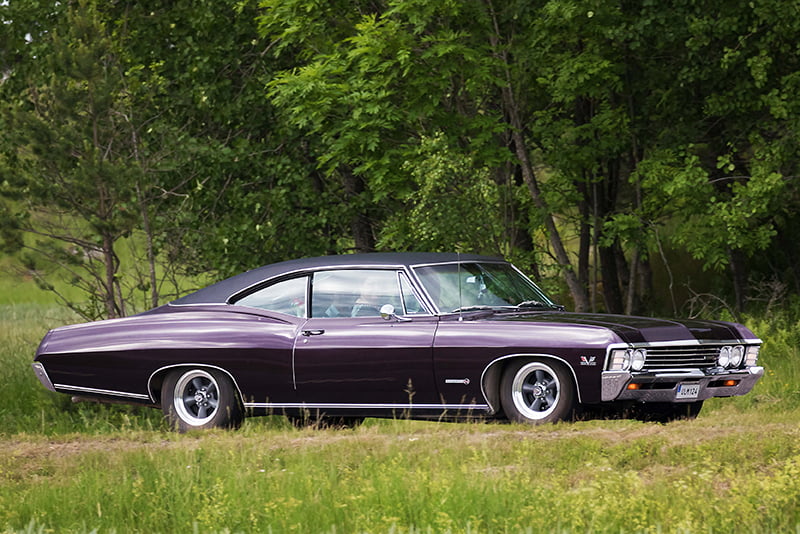Chevrolet have long been regarded as world leaders when it comes to the production of big, loud and curvy cars – and the 67 Chevy Impala was no exception.
Iconic cars don’t only appeal to car lovers, but they also tend to attract those passionate about engineering, design, art and yes, history. Before cars were built for efficiency and speed, it was about the experience, style, exclusivity and ultimately, craftsmanship, making them timeless, works of art.
Although it’s often the 1950’s that modern day collectors regard as the perfect era, through history there have also been late bloomers when it comes to developing a fan club decades later, with one such model being the 1967 Chevy Impala.
The Origins Of The 67 Impala
The Chevrolet brand we all know and love once wasn’t quite as revered, and was actually the cheapest of all of the General Motors subsidiaries. Although Chevrolet once came last behind Pontiac, Oldsmobile, Buick and of course, Cadillac, many of those former powerhouse brands have since been retired thanks to unsustainable production methods and sales figures. Ironically, it’s Chevrolet that still stands.
Formally known as the Chevrolet Division of General Motors, the “Chevy” brand as we know it was originally founded in 1911 by Louis Chevrolet, and none other than William C. Durant. For the uninitiated, Durant was actually the original founder of General Motors – that is, before he was unceremoniously ousted from the board. Durant went on to use the Chevrolet Motor Car Company to acquire a controlling stake in General Motors with a reverse merger, propelling himself back into the General Motors presidency in 1918. However, Durant was only “back in the driver’s seat” for one short year, before being ousted again in 1919.
Marketed as “a car for every purse and purpose”, the Chevrolet brand went on to become the volume leader in the General Motors diverse family of automobile subsidiaries, selling mainstream vehicles designed to compete with the likes of the Ford Motor Company. The strategy worked, and Chevrolet went on to overtake Ford as America’s best selling car brand in 1929.
The direction and vision of Chevrolet changed rapidly with the onset of World War II, and the production of consumer automobiles quickly shifted to that of military grade trucks in the Canadian and American factories. Once the war was over, the 1950’s signalled a new era for Americans. Life was good, and it was time to think big – and that included cars. One of the most iconic vehicles to dominate this decade was the Chevy Bel Air. Revolutionary for it’s time, it transformed the Chevrolet brand from Sunday morning cruisers into Saturday night staples.
Oddly enough, many car lovers don’t realise that the original Chevy Impala was actually released as a version of the Bel Air. Debuted in 1956 as a concept car, the original Impala was heavily inspired by the Corvette, and aimed to showcase lavish interiors with powerful engines. The Impala did just as well at the drag races as it did for a family on vacation, and was soon a topseller upon its first full release in 1958.
From there, the Impala went on to be the best-selling full-size model from the entire range of Chevrolet. The fourth generation of the range manufactured between 1964 to 1970, covered the model years from ’65 to ’70. Every model year of this generation received annual facelifts which distinguished one from the other.
Of these annual facelifts, it’s the 1967 Chevy Impala that is regarded as one of the best. Thanks to its unique combination of curves, comfort luxury and served with a potent dose of V8 performance, the 1967 model was the best selling of the Impala lineup. The risks involved with a full redesign paid off for Chevrolet, as the 67 Impala was given a “coke bottle” aesthetic, making it longer and wider than previous models.
Apart from the car’s body, the 1967 Impala was released with many other firsts. Apart from the new exterior design, many new safety features were added to the car thanks to new federal safety regulations. Both the 1967 and 1968 models got a host of safety aids, such as a dual master cylinder braking system with a warning lamp, a four-way hazard warning flasher, side marker lights, shoulder belts, and a fully collapsible energy-absorbing steering column built by General Motors. The 67 Impala also had a relatively quieter and smoother ride, thanks to a new assembly that isolated the body from the frame.
Overall, the 67 Chevy Impala was all about looks, curves, performance and blind, which is why it’s managed to hang onto its status as a fan favourite amongst car lovers all these years later.

